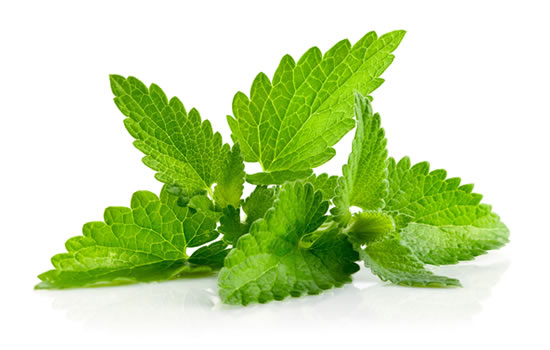Every day, we use our hands to engage in various activities such as our work. We also use them to touch people especially during handshakes, touch objects and different surfaces throughout the day. As we do this, we literally gather up germs on our hands. In the process, we can infect ourselves with these germs when we touch various parts of our bodies especially the eyes, the nose and the mouth. We could also infect others when we touch them too. But do you know that you can live a sickness free life in spite of this by doing one very simple and cost free activity: WASHING YOUR HANDS.
Truth be told, you really cannot keep your hands germ-free; however, if you wash your hands regularly you can limit the transfer of these diseases-causing microbes otherwise known as pathogens. It is important for you to realise that what you do with your hands will definitely affect your health. Permit me to say that your hands hold the key to your health
You might be asking, “How often should I then wash my hands?” Have you heard the saying that too much of everything is bad? Well, not in this case. Actually, you can’t wash your hands enough. You should engage in hand washing:
- Before, during, and after you have prepared your food
- Before you eat your food
- Before and after you have taken care of a sick person
- Before and after you have treated a cut or wound
- After you have used the toilet
- After changing diapers or cleaning up a child who has used the toilet
- After coughing, sneezing, or blowing your nose
- After coming in contact with an animal, animal feed, or animal waste
- After handling pet food or pet treats
- After touching and disposing waste
It is important at this point to know that there are actually series of steps you need during hand washing in order to stay healthy. If your hands are not washed properly, it is almost as though you have not washed them at all. Many people “claim” to have washed their hands whereas they just used water. That’s not effective. The best way to wash your hands is to do so with soap and water. Follow these simple steps for effective hand washing:
- Make your hands wet with clean, running water (warm or cold).
- Apply liquid, bar or powder soap.
- Let the soap foam well.

- Rub your hands energetically for a minimum 20 seconds scrubbing all surfaces, including the backs of your hands, wrists, between your fingers and under your fingernails.
- Rinse well.
- Dry your hands with a clean or disposable towel or air dryer.
- If it is possible, use a towel or your elbow to turn off the tap.
If clean running water is not available, use any available water that is clean. If soap and water are not available, alcohol-based hand sanitizers are an acceptable alternative. However, it is important that you check to make sure that the product is 60% alcohol. When using alcohol-based hand sanitizers, ensure that you apply sufficient amounts of the product to your hands until they are wet and then rub your hands together, covering all surfaces, until your hands are dry.
As simple as hand washing is, it could just be the activity that keeps you from the hospital the rest of your life. Ensure you do it regularly.
Please feel free to share your comment in the comment section below










I every time used to study post in news papers but now as I am a user of web so from now I am using net
for content, thanks to web.
You should take part in a contest for one of the finest blogs on the net. I most certainly will recommend this web site!
[url=https://propecia1st.science/#]cost of propecia prices[/url] cost cheap propecia tablets
where to buy amoxicillin: [url=http://amoxicillins.com/#]generic amoxil 500 mg[/url] where to buy amoxicillin 500mg without prescription
best ed drugs [url=http://cheapestedpills.com/#]best ed pill[/url] how to cure ed
[url=https://propecia1st.science/#]cost propecia online[/url] propecia brand name
medicine erectile dysfunction [url=http://cheapestedpills.com/#]new treatments for ed[/url] best ed treatment
how to get mobic no prescription [url=https://mobic.store/#]cost of generic mobic without insurance[/url] where to get cheap mobic without insurance
cheap neurontin online [url=http://gabapentin.pro/#]buy cheap neurontin online[/url] neurontin 50mg cost
price of ivermectin [url=https://stromectolonline.pro/#]ivermectin price uk[/url] ivermectin 18mg
Thanks for a marvelous posting! I actually enjoyed reading it,
you’re a great author.I will be sure to bookmark your blog and may come back from now on. I want to encourage yourself
to continue your great job, have a nice day!
My spouse and I stumbled over here different web address and thought I may as well check things out.
I like what I see so i am just following you.
Look forward to finding out about your web page again.
You ought to be a part of a contest for one of the most useful websites online. I will recommend this blog!
canadian pharmacies compare [url=https://certifiedcanadapills.pro/#]safe canadian pharmacies[/url] is canadian pharmacy legit
best canadian online pharmacy [url=https://certifiedcanadapills.pro/#]canadian pharmacy prices[/url] canadian pharmacy mall
farmacia online madrid [url=http://farmaciabarata.pro/#]farmacia online barata[/url] farmacias online seguras
I think everything posted was very logical. However, consider this,
what if you were to write a killer post title?
I mean, I don’t want to tell you how to run your blog, but what if you added something
that grabbed folk’s attention? I mean To keep sickness away with your hands, DO THIS REGULARLY – Healthfacts is kinda vanilla.
You might glance at Yahoo’s front page and note how they create article headlines to get people interested.
You might add a related video or a related picture or two to
get readers excited about everything’ve written. Just
my opinion, it might bring your blog a little bit more interesting.
doxycycline where to get [url=http://doxycyclineotc.store/#]doxycycline over the counter drug[/url] cost of doxycycline
how to get zithromax over the counter [url=https://azithromycinotc.store/#]azithromycin 500 mg buy online[/url] zithromax 500 mg lowest price drugstore online
I have been exploring for a bit for any high quality articles or weblog posts in this sort of space .
Exploring in Yahoo I at last stumbled upon this website.
Studying this info So i’m glad to show that I have a very
excellent uncanny feeling I came upon exactly what I needed.
I such a lot certainly will make sure to don?t fail to remember this web site and
give it a glance on a continuing basis.
It’s an remarkable piece of writing for all the internet users;
they will get benefit from it I am sure.
online pharmacy india [url=http://indianpharmacy.life/#]online pharmacy India[/url] top 10 pharmacies in india
Heya i’m for the first time here. I found this board and I find It really useful & it helped me out much.
I hope to give something back and aid others like
you aided me.
You are so interesting! I do not believe I’ve truly read through anything like this before.
So nice to discover someone with some original thoughts on this issue.
Really.. thank you for starting this up. This web site is something that is needed on the web,
someone with a bit of originality!
Hi there! I could have sworn I’ve visited this blog before but
after browsing through some of the posts I realized it’s
new to me. Anyhow, I’m definitely pleased I found it and
I’ll be book-marking it and checking back often!
Hey there! This is my first visit to your blog! We are a team of volunteers and starting a new project in a community in the same niche.
Your blog provided us useful information to work on. You have done a marvellous job!
Genuinely when someone doesn’t understand then its up to other users that they will assist,
so here it occurs.
An intriguing discussion is worth comment. I do think
that you need to write more about this topic,
it may not be a taboo matter but usually folks don’t speak about these topics.
To the next! Cheers!!
medical pharmacy [url=https://drugsotc.pro/#]us online pharmacy[/url] onlinepharmaciescanada com
First and foremost, the user encounter is elevated to an above-average level.
I have fun with, lead to I discovered just what I was
looking for. You’ve ended my four day long hunt! God Bless
you man. Have a great day. Bye
Hi there, this weekend is nice designed for me, as this time i am reading
this impressive educational article here at my home.
Magnificent web site. A lot of helpful info here. I am sending it to several friends ans additionally sharing in delicious.
And naturally, thanks in your sweat!
online shopping pharmacy india [url=https://indianpharmacy.life/#]buy medicines from India[/url] best online pharmacy india
Kamagra 100mg price [url=https://kamagra.icu/#]Kamagra Oral Jelly[/url] Kamagra Oral Jelly
Sildenafil 100mg price [url=http://viagra.eus/#]Generic Viagra for sale[/url] sildenafil over the counter
sildenafil 50 mg price [url=http://viagra.eus/#]viagra canada[/url] Cheap Sildenafil 100mg
Cialis 20mg price in USA [url=http://cialis.foundation/#]Tadalafil price[/url] Tadalafil Tablet
Kamagra 100mg price [url=http://kamagra.icu/#]Kamagra 100mg[/url] п»їkamagra
Buy Tadalafil 20mg [url=http://cialis.foundation/#]Cialis 20mg price in USA[/url] Cialis over the counter
zithromax pill [url=http://zithromaxbestprice.icu/#]zithromax prescription in canada[/url] buy zithromax canada
zithromax cost australia [url=http://zithromaxbestprice.icu/#]zithromax 250 mg pill[/url] zithromax cost canada
tamoxifen postmenopausal [url=https://nolvadex.fun/#]tamoxifen postmenopausal[/url] tamoxifen warning
mail order pharmacy india [url=http://indiapharm.llc/#]India Post sending medicines to USA[/url] buy prescription drugs from india indiapharm.llc
reputable mexican pharmacies online [url=http://mexicopharm.com/#]Medicines Mexico[/url] purple pharmacy mexico price list mexicopharm.com
indian pharmacy online [url=https://indiapharm.llc/#]top 10 pharmacies in india[/url] mail order pharmacy india indiapharm.llc
Kamagra 100mg price [url=https://kamagradelivery.pro/#]cheap kamagra[/url] Kamagra tablets
Vardenafil buy online [url=https://levitradelivery.pro/#]Generic Levitra 20mg[/url] buy Levitra over the counter
paxlovid pill [url=https://paxlovid.guru/#]Buy Paxlovid privately[/url] paxlovid india
Paxlovid over the counter [url=http://paxlovid.guru/#]Buy Paxlovid privately[/url] paxlovid for sale
lasix furosemide [url=http://furosemide.pro/#]furosemide 100mg[/url] lasix uses
buy zithromax 500mg online [url=http://azithromycin.store/#]Azithromycin 250 buy online[/url] where to get zithromax over the counter
furosemide 40mg [url=https://furosemide.pro/#]lasix furosemide[/url] buy furosemide online
buy cytotec pills online cheap [url=https://misoprostol.shop/#]Buy Abortion Pills Online[/url] buy misoprostol over the counter
lasix generic name [url=http://furosemide.pro/#]Over The Counter Lasix[/url] lasix uses
farmacia online miglior prezzo [url=https://tadalafilitalia.pro/#]Farmacie a milano che vendono cialis senza ricetta[/url] farmaci senza ricetta elenco
farmacia online [url=http://tadalafilitalia.pro/#]dove acquistare cialis online sicuro[/url] farmacia online senza ricetta
farmacie online affidabili [url=http://avanafilitalia.online/#]avanafil prezzo in farmacia[/url] п»їfarmacia online migliore
farmacia online piГ№ conveniente [url=http://tadalafilitalia.pro/#]cialis prezzo[/url] п»їfarmacia online migliore
buying prescription drugs in mexico online [url=http://mexicanpharm.store/#]mexican pharmaceuticals online[/url] mexican pharmaceuticals online
mexico drug stores pharmacies [url=https://mexicanpharm.store/#]mexican mail order pharmacies[/url] п»їbest mexican online pharmacies
cheap clomid without rx [url=https://clomidpharm.shop/#]get cheap clomid pills[/url] can i get clomid price
prednisone pills 10 mg [url=http://prednisonepharm.store/#]purchase prednisone 10mg[/url] prednisone generic cost
canadian drugstore cialis [url=https://reputablepharmacies.online/#]buy drugs canada[/url] cheap canadian pharmacy
best internet pharmacies [url=http://reputablepharmacies.online/#]certified mexican pharmacy[/url] canada pharmaceuticals online
online prescriptions [url=https://reputablepharmacies.online/#]canadian pharmacies for viagra[/url] canada pharmacies online prescriptions
viagra without a doctor prescription [url=http://edwithoutdoctorprescription.store/#]buy prescription drugs from india[/url] buy prescription drugs
canadian drugs online pharmacy [url=https://reputablepharmacies.online/#]reliable mexican pharmacies[/url] pharcharmy online no script
non prescription ed pills [url=https://edwithoutdoctorprescription.store/#]buy prescription drugs online without[/url] prescription drugs online without doctor
new treatments for ed [url=http://edpills.bid/#]ed pills online[/url] best ed treatment
buy prescription drugs without doctor [url=https://edwithoutdoctorprescription.store/#]viagra without doctor prescription amazon[/url] buy prescription drugs from india
overseas online pharmacy [url=https://reputablepharmacies.online/#]certified canadian online pharmacy[/url] best pharmacy prices
canadian pharmacy reviews [url=http://canadianpharmacy.pro/#]Pharmacies in Canada that ship to the US[/url] canadian pharmacy king reviews canadianpharmacy.pro
best india pharmacy [url=https://indianpharmacy.shop/#]Best Indian pharmacy[/url] indian pharmacy online indianpharmacy.shop
buying prescription drugs in mexico online [url=http://mexicanpharmacy.win/#]Medicines Mexico[/url] п»їbest mexican online pharmacies mexicanpharmacy.win
mexico drug stores pharmacies [url=https://mexicanpharmacy.win/#]online mexican pharmacy[/url] mexican rx online mexicanpharmacy.win
canadian pharmacy king [url=https://canadianpharmacy.pro/#]Canadian pharmacy online[/url] canadadrugpharmacy com canadianpharmacy.pro
indian pharmacy [url=http://indianpharmacy.shop/#]Best Indian pharmacy[/url] indian pharmacy online indianpharmacy.shop
canadian pharmacy meds reviews [url=http://canadianpharmacy.pro/#]Canada Pharmacy[/url] canadian pharmacy world canadianpharmacy.pro
buy prescription drugs from india [url=http://indianpharmacy.shop/#]indian pharmacy[/url] indian pharmacy online indianpharmacy.shop
medicine in mexico pharmacies [url=http://mexicanpharmacy.win/#]п»їbest mexican online pharmacies[/url] mexican pharmacy mexicanpharmacy.win
Pharmacie en ligne pas cher [url=https://cialissansordonnance.shop/#]Acheter Cialis 20 mg pas cher[/url] Pharmacie en ligne France
Pharmacie en ligne livraison 24h [url=https://acheterkamagra.pro/#]kamagra oral jelly[/url] Pharmacie en ligne pas cher
pharmacie ouverte 24/24 [url=https://cialissansordonnance.shop/#]cialissansordonnance.shop[/url] Pharmacie en ligne livraison 24h
SildГ©nafil 100 mg prix en pharmacie en France [url=https://viagrasansordonnance.pro/#]viagra sans ordonnance[/url] Le gГ©nГ©rique de Viagra
Pharmacie en ligne livraison 24h [url=https://levitrasansordonnance.pro/#]levitra generique prix en pharmacie[/url] pharmacie ouverte
Viagra sans ordonnance pharmacie France [url=http://viagrasansordonnance.pro/#]Meilleur Viagra sans ordonnance 24h[/url] SildГ©nafil 100 mg prix en pharmacie en France
stromectol tab [url=https://ivermectin.store/#]ivermectin tablets[/url] ivermectin 3 mg dose
1250 mg prednisone [url=http://prednisonetablets.shop/#]prednisone where can i buy[/url] prednisone cost 10mg
buying clomid for sale [url=https://clomiphene.icu/#]can you buy clomid without dr prescription[/url] where can i buy cheap clomid without a prescription
canine prednisone 5mg no prescription [url=http://prednisonetablets.shop/#]prednisone brand name india[/url] cost of prednisone 5mg tablets
prednisone 2.5 mg tab [url=https://prednisonetablets.shop/#]over the counter prednisone cheap[/url] 25 mg prednisone
ivermectin 3mg tablets price [url=http://ivermectin.store/#]ivermectin goodrx[/url] stromectol 6 mg tablet
ivermectin cost canada [url=http://ivermectin.store/#]stromectol liquid[/url] stromectol pill
top 10 pharmacies in india [url=https://indianpharm.store/#]Indian pharmacy to USA[/url] top 10 online pharmacy in india indianpharm.store
canadian online pharmacy [url=http://canadianpharm.store/#]Canadian International Pharmacy[/url] the canadian pharmacy canadianpharm.store
buy medicines online in india [url=http://indianpharm.store/#]Indian pharmacy to USA[/url] buy medicines online in india indianpharm.store
medication from mexico pharmacy [url=http://mexicanpharm.shop/#]Online Mexican pharmacy[/url] pharmacies in mexico that ship to usa mexicanpharm.shop
medication from mexico pharmacy [url=https://mexicanpharm.shop/#]purple pharmacy mexico price list[/url] mexican online pharmacies prescription drugs mexicanpharm.shop
mexican pharmacy [url=https://mexicanpharm.shop/#]Online Pharmacies in Mexico[/url] buying prescription drugs in mexico online mexicanpharm.shop
mexican mail order pharmacies [url=http://mexicanpharm.shop/#]pharmacies in mexico that ship to usa[/url] mexico drug stores pharmacies mexicanpharm.shop
mexico pharmacies prescription drugs [url=https://mexicanpharm.shop/#]purple pharmacy mexico price list[/url] mexico pharmacies prescription drugs mexicanpharm.shop
canadian pharmaceuticals online [url=https://canadadrugs.pro/#]best online pharmacy without prescriptions[/url] canadian medication
compare prescription drug prices [url=http://canadadrugs.pro/#]prescription price comparison[/url] verified canadian pharmacy
testosterone canadian pharmacy [url=http://canadadrugs.pro/#]discount prescription drugs[/url] the best canadian pharmacy
online pharmacy canada [url=http://canadadrugs.pro/#]list of reputable canadian pharmacies[/url] best online canadian pharcharmy
canada pharmaceutical online ordering [url=http://canadadrugs.pro/#]tadalafil canadian pharmacy[/url] canadian pharmacy for sildenafil
non perscription on line pharmacies [url=http://canadadrugs.pro/#]discount drug store online shopping[/url] canadian pharmacy generic
reputable indian online pharmacy [url=https://medicinefromindia.store/#]online pharmacy india[/url] indianpharmacy com
prescription drugs without prior prescription [url=http://edwithoutdoctorprescription.pro/#]cheap cialis[/url] buy prescription drugs online without
canada drugs online [url=https://canadianinternationalpharmacy.pro/#]cheap canadian pharmacy online[/url] vipps approved canadian online pharmacy
men’s ed pills [url=https://edpill.cheap/#]ed pills that work[/url] online ed pills
mexican drugstore online [url=https://certifiedpharmacymexico.pro/#]purple pharmacy mexico price list[/url] buying prescription drugs in mexico
male erection pills [url=https://edpill.cheap/#]best non prescription ed pills[/url] best medication for ed
erection pills that work [url=https://edpill.cheap/#]medicine erectile dysfunction[/url] ed pills for sale
mexico drug stores pharmacies [url=https://certifiedpharmacymexico.pro/#]mexican border pharmacies shipping to usa[/url] п»їbest mexican online pharmacies
my canadian pharmacy review [url=http://canadianinternationalpharmacy.pro/#]canadian compounding pharmacy[/url] canadian pharmacy price checker
buy cheap prescription drugs online [url=https://edwithoutdoctorprescription.pro/#]best ed pills non prescription[/url] buy prescription drugs from canada
cross border pharmacy canada [url=https://canadianinternationalpharmacy.pro/#]canadian pharmacy world[/url] canada rx pharmacy world
gnc ed pills [url=https://edpill.cheap/#]erection pills that work[/url] non prescription ed pills
buy medicines online in india [url=http://medicinefromindia.store/#]buy medicines online in india[/url] indian pharmacies safe
canadian neighbor pharmacy [url=https://canadianinternationalpharmacy.pro/#]safe reliable canadian pharmacy[/url] precription drugs from canada
pharmacies in mexico that ship to usa [url=https://certifiedpharmacymexico.pro/#]buying prescription drugs in mexico online[/url] mexico pharmacy
buying prescription drugs in mexico online [url=http://mexicanph.com/#]purple pharmacy mexico price list[/url] purple pharmacy mexico price list
mexican pharmaceuticals online [url=https://mexicanph.shop/#]mexican rx online[/url] п»їbest mexican online pharmacies
buying prescription drugs in mexico online [url=http://mexicanph.shop/#]medication from mexico pharmacy[/url] reputable mexican pharmacies online
mexican mail order pharmacies [url=https://mexicanph.com/#]mexican drugstore online[/url] mexican pharmacy
mexico drug stores pharmacies [url=http://mexicanph.com/#]mexican online pharmacies prescription drugs[/url] mexican online pharmacies prescription drugs
best online pharmacies in mexico [url=https://mexicanph.com/#]medicine in mexico pharmacies[/url] best online pharmacies in mexico
medicine in mexico pharmacies [url=https://mexicanph.shop/#]medicine in mexico pharmacies[/url] best online pharmacies in mexico
buying from online mexican pharmacy [url=https://mexicanph.shop/#]mexico drug stores pharmacies[/url] buying prescription drugs in mexico
Hey there, neat site you’ve gotten at this time there. [url=http://www.ichun.co.kr/bbs/board.php?bo_table=free&wr_id=521361]clomid abordable et de qualité[/url]
mexico drug stores pharmacies [url=https://mexicanph.com/#]best online pharmacies in mexico[/url] mexican pharmaceuticals online
mexican border pharmacies shipping to usa [url=http://mexicanph.com/#]mexico drug stores pharmacies[/url] best online pharmacies in mexico
buying prescription drugs in mexico [url=http://mexicanph.com/#]mexico drug stores pharmacies[/url] medication from mexico pharmacy
purple pharmacy mexico price list [url=http://mexicanph.com/#]mexican drugstore online[/url] mexican online pharmacies prescription drugs
mexican drugstore online [url=http://mexicanph.com/#]mexico pharmacies prescription drugs[/url] pharmacies in mexico that ship to usa
buying prescription drugs in mexico online [url=https://mexicanph.shop/#]reputable mexican pharmacies online[/url] mexican drugstore online
lisinopril 20 mg tab price [url=http://lisinopril.top/#]zestril 5 mg tablet[/url] lisinopril 2.5 tablet
lasix 100mg [url=https://furosemide.guru/#]Buy Lasix[/url] lasix 40mg
average cost of generic prednisone [url=http://buyprednisone.store/#]prednisone 20mg tab price[/url] prednisone 20mg online
prednisone 2.5 mg price [url=http://buyprednisone.store/#]order prednisone online canada[/url] where to buy prednisone 20mg
п»їlegitimate online pharmacies india [url=http://indianph.xyz/#]online pharmacy india[/url] online pharmacy india
tamoxifen [url=http://nolvadex.guru/#]nolvadex pct[/url] nolvadex half life
does tamoxifen cause joint pain [url=http://nolvadex.guru/#]nolvadex during cycle[/url] tamoxifen and bone density
diflucan otc [url=http://diflucan.pro/#]diflucan 1 pill[/url] diflucan pills online
canadian pharmacy near me [url=http://canadianpharmlk.com/#]Pharmacies in Canada that ship to the US[/url] escrow pharmacy canada canadianpharm.store
best online pharmacies in mexico [url=https://mexicanpharm24.shop/#]Mexico pharmacy online[/url] buying prescription drugs in mexico online mexicanpharm.shop
indian pharmacy paypal [url=http://indianpharm24.com/#]Online India pharmacy[/url] online pharmacy india indianpharm.store
mexican online pharmacies prescription drugs [url=http://mexicanpharm24.shop/#]order online from a Mexican pharmacy[/url] buying prescription drugs in mexico online mexicanpharm.shop
prednisone 20 mg in india [url=http://prednisonest.pro/#]prednisone price australia[/url] prednisone 10 mg brand name
prednisone 15 mg daily [url=https://prednisonest.pro/#]buy prednisone without prescription[/url] prednisone brand name us
can i get generic clomid pill [url=http://clomidst.pro/#]can i purchase clomid price[/url] where can i buy clomid
uk pharmacy no prescription [url=https://onlinepharmacy.cheap/#]online pharmacy[/url] mail order pharmacy no prescription
ed treatment online [url=http://edpills.guru/#]what is the cheapest ed medication[/url] online erectile dysfunction pills
ed treatment online [url=http://edpills.guru/#]cheap erectile dysfunction pills[/url] buying ed pills online
buy medicines online in india [url=http://indianpharm.shop/#]world pharmacy india[/url] indian pharmacy
reputable indian online pharmacy [url=https://indianpharm.shop/#]top 10 online pharmacy in india[/url] online pharmacy india
mexican pharmaceuticals online [url=https://mexicanpharm.online/#]mexican online pharmacies prescription drugs[/url] medicine in mexico pharmacies
meds online without prescription [url=http://pharmacynoprescription.pro/#]buying online prescription drugs[/url] how to buy prescriptions from canada safely
п»їbest mexican online pharmacies [url=https://mexicanpharm.online/#]mexican pharmaceuticals online[/url] mexican online pharmacies prescription drugs
canada mail order prescription [url=https://pharmacynoprescription.pro/#]mexican pharmacies no prescription[/url] canada pharmacies online prescriptions
canadian pharmacy online reviews [url=http://canadianpharm.guru/#] canadian mail order pharmacy[/url] canadian drug pharmacy
indian pharmacy [url=http://indianpharmacy.icu/#]Generic Medicine India to USA[/url] top 10 pharmacies in india
cheapest online pharmacy india [url=https://indianpharmacy.icu/#]Online medicine home delivery[/url] online pharmacy india
prednisone 500 mg tablet [url=https://prednisoneall.com/#]prednisone 30 mg daily[/url] prednisone 10 mg tablet cost
buy amoxicillin 500mg [url=http://amoxilall.shop/#]amoxicillin 500 mg capsule[/url] amoxicillin 500 mg without a prescription
generic amoxicillin online [url=http://amoxilall.shop/#]amoxicillin buy no prescription[/url] buy amoxicillin online without prescription
buy amoxicillin online no prescription [url=https://amoxilall.com/#]amoxicillin 500mg capsule[/url] amoxicillin where to get
sildenafil over the counter [url=https://sildenafiliq.xyz/#]buy viagra online[/url] п»їBuy generic 100mg Viagra online
buying from online mexican pharmacy [url=http://mexicanpharmgrx.com/#]online pharmacy in Mexico[/url] best online pharmacies in mexico
buying prescription drugs in mexico online [url=http://mexicanpharmgrx.com/#]mexican pharmacy[/url] medication from mexico pharmacy
canadian online drugs [url=http://canadianpharmgrx.com/#]Certified Canadian pharmacies[/url] best canadian pharmacy
Cytotec 200mcg price [url=https://misoprostol.top/#]buy cytotec pills online cheap[/url] cytotec buy online usa
amoxicillin over the counter in canada [url=http://amoxicillina.top/#]amoxicillin order online no prescription[/url] amoxicillin no prescipion
ivermectin lice oral [url=http://stromectola.top/#]ivermectin online[/url] ivermectin lotion for scabies
cheap ed [url=http://edpill.top/#]cheapest online ed treatment[/url] online ed prescription
ed treatment online [url=https://edpill.top/#]best ed medication online[/url] cheapest online ed meds
casino online uy tin [url=https://casinvietnam.shop/#]casino tr?c tuy?n[/url] game c? b?c online uy tin
web c? b?c online uy tin [url=http://casinvietnam.shop/#]danh bai tr?c tuy?n[/url] choi casino tr?c tuy?n tren di?n tho?i
buying from canadian pharmacies [url=https://canadaph24.pro/#]canadian pharmacies[/url] canada rx pharmacy world
tamoxifen cancer [url=http://nolvadex.life/#]nolvadex d[/url] buy tamoxifen
tamoxifen warning [url=http://nolvadex.life/#]buy nolvadex online[/url] tamoxifen breast cancer
get propecia no prescription [url=https://finasteride.store/#]cost of cheap propecia pill[/url] cost of propecia without dr prescription
buy ciprofloxacin [url=http://ciprofloxacin.tech/#]ciprofloxacin[/url] ciprofloxacin generic price
cipro [url=https://ciprofloxacin.tech/#]cipro[/url] buy cipro online
buy propecia price [url=http://finasteride.store/#]buy propecia without a prescription[/url] order propecia without prescription
nolvadex estrogen blocker [url=https://nolvadex.life/#]where to get nolvadex[/url] tamoxifen and osteoporosis
femara vs tamoxifen [url=http://nolvadex.life/#]tamoxifen mechanism of action[/url] where can i buy nolvadex
cost of generic propecia without insurance [url=https://finasteride.store/#]order propecia pills[/url] cost propecia without dr prescription
lisinopril 1 mg [url=https://lisinopril.network/#]lisinopril 20 mg tablet price[/url] zestril over the counter
hysterectomy after breast cancer tamoxifen [url=http://nolvadex.life/#]does tamoxifen make you tired[/url] tamoxifen adverse effects
cipro for sale [url=http://ciprofloxacin.tech/#]ciprofloxacin 500mg buy online[/url] buy cipro online
cenforce for sale [url=https://cenforce.pro/#]Purchase Cenforce Online[/url] order cenforce
buy Kamagra [url=https://kamagra.win/#]kamagra[/url] Kamagra Oral Jelly
Cialis 20mg price [url=http://cialist.pro/#]Generic Tadalafil 20mg price[/url] buy cialis pill
buy cialis pill [url=https://cialist.pro/#]buy cialis overseas[/url] Cialis over the counter
buy cialis pill [url=https://cialist.pro/#]Generic Tadalafil 20mg price[/url] Generic Cialis price
reputable online pharmacy no prescription [url=http://pharmworld.store/#]online pharmacy no prescription needed[/url] canadian pharmacy discount code
medications online without prescriptions [url=https://pharmnoprescription.icu/#]best online pharmacies without prescription[/url] canada drugs without prescription
canadian pharmacy no prescription needed [url=https://pharmworld.store/#]online pharmacy[/url] canadian pharmacy discount coupon
cheapest online pharmacy india [url=https://pharmindia.online/#]india pharmacy[/url] top 10 pharmacies in india
no prescription pharmacy paypal [url=https://pharmworld.store/#]online pharmacy[/url] canadian pharmacy without prescription
prednisone 50 mg for sale [url=http://prednisoned.online/#]prednisone 20 mg pill[/url] prednisone 60 mg daily
order neurontin [url=https://gabapentinneurontin.pro/#]neurontin 300 mg[/url] neurontin singapore
prednisone in india [url=https://prednisoned.online/#]prednisone 40 mg daily[/url] prednisone 10mg price in india
buy doxycycline without prescription [url=http://doxycyclinea.online/#]cheap doxycycline online[/url] price of doxycycline
doxycycline 100mg price [url=https://doxycyclinea.online/#]doxycycline mono[/url] doxycycline hyclate
generic doxycycline [url=https://doxycyclinea.online/#]doxycycline tetracycline[/url] buy doxycycline without prescription uk
amoxicillin online canada [url=http://amoxila.pro/#]amoxicillin 875 125 mg tab[/url] amoxicillin cost australia
zithromax price south africa [url=https://zithromaxa.store/#]zithromax for sale usa[/url] how to get zithromax online
buy doxycycline without prescription uk [url=https://doxycyclinea.online/#]buy generic doxycycline[/url] generic for doxycycline
doxycycline 50 mg [url=https://doxycyclinea.online/#]where can i get doxycycline[/url] doxycycline generic
doxycycline vibramycin [url=https://doxycyclinea.online/#]doxycycline 500mg[/url] doxycycline without prescription
where can i get zithromax [url=http://zithromaxa.store/#]zithromax 500 without prescription[/url] how much is zithromax 250 mg
over the counter amoxicillin canada [url=http://amoxila.pro/#]amoxicillin online without prescription[/url] cost of amoxicillin 875 mg
mexican rx online [url=http://mexicanpharmacy1st.com/#]mexican pharmaceuticals online[/url] mexican drugstore online
mexican drugstore online [url=https://mexicanpharmacy1st.online/#]mexican rx online[/url] mexican pharmaceuticals online
mexican rx online [url=http://mexicanpharmacy1st.com/#]mexican rx online[/url] reputable mexican pharmacies online
mexico pharmacies prescription drugs [url=https://mexicanpharmacy1st.online/#]mexican pharmacy[/url] buying from online mexican pharmacy
п»їbest mexican online pharmacies [url=http://mexicanpharmacy1st.com/#]best online pharmacies in mexico[/url] buying prescription drugs in mexico online
mexican online pharmacies prescription drugs [url=https://mexicanpharmacy1st.online/#]mexico pharmacy[/url] mexican online pharmacies prescription drugs
mexican online pharmacies prescription drugs [url=https://mexicanpharmacy1st.com/#]mexican pharmacy[/url] mexico drug stores pharmacies
mexican pharmaceuticals online [url=http://mexicanpharmacy1st.com/#]best online pharmacies in mexico[/url] mexican online pharmacies prescription drugs
gabapentin 100mg [url=http://gabapentin.club/#]neurontin 600 mg[/url] neurontin 50mg tablets
buy cytotec pills online cheap [url=https://cytotec.xyz/#]buy misoprostol over the counter[/url] buy cytotec pills online cheap
neurontin 100 mg [url=http://gabapentin.club/#]generic neurontin 600 mg[/url] cost of brand name neurontin
buy cytotec in usa [url=http://cytotec.xyz/#]buy cytotec[/url] cytotec online
lisinopril 102 [url=http://lisinopril.club/#]lisinopril pharmacy online[/url] zestril 10mg price
cost of cheap propecia no prescription [url=https://propeciaf.online/#]cost propecia online[/url] buy propecia for sale
medication lisinopril 10 mg [url=http://lisinopril.club/#]lisinopril 10 mg 12.5mg[/url] lisinopril tabs 10mg
order neurontin [url=https://gabapentin.club/#]cost of neurontin 800 mg[/url] neurontin 100mg tab
cytotec online [url=http://cytotec.xyz/#]buy cytotec[/url] order cytotec online
canadian and international prescription service [url=http://cheapestandfast.com/#]cheapest & fast pharmacy[/url] mexico online pharmacy prescription drugs
mail order pharmacy india [url=http://cheapestindia.com/#]buy prescription drugs from india[/url] top 10 online pharmacy in india
reputable mexican pharmacies online [url=https://cheapestmexico.com/#]mexico pharmacy[/url] mexico drug stores pharmacies
canadian pharmacy world coupon [url=https://36and6health.com/#]36and6health[/url] canadian pharmacy discount coupon
farmacia online envГo gratis [url=http://eufarmaciaonline.com/#]farmacia online 24 horas[/url] farmacias direct
п»їshop apotheke gutschein [url=https://euapothekeohnerezept.com/#]beste online-apotheke ohne rezept[/url] gГјnstigste online apotheke
migliori farmacie online 2024 [url=https://eufarmacieonline.com/#]top farmacia online[/url] acquistare farmaci senza ricetta
farmacia online piГ№ conveniente [url=http://eufarmacieonline.com/#]Farmacie on line spedizione gratuita[/url] farmacia online senza ricetta
farmacia barata [url=https://eufarmaciaonline.com/#]farmacias online seguras en espaГ±a[/url] farmacia online madrid
pharmacie en ligne france pas cher [url=http://eumedicamentenligne.com/#]Pharmacie Internationale en ligne[/url] vente de mГ©dicament en ligne
farmacia en casa online descuento [url=https://eufarmaciaonline.com/#]farmacia online madrid[/url] farmacias online seguras
ohne rezept apotheke [url=http://euapothekeohnerezept.com/#]online apotheke gГјnstig[/url] п»їshop apotheke gutschein
pharmacie en ligne avec ordonnance [url=http://levitraenligne.com/#]Levitra 20mg prix en pharmacie[/url] Pharmacie Internationale en ligne
Hello.
This post was created with XRumer 23 StrongAI.
Good luck 🙂
Hello!
This post was created with XRumer 23 StrongAI.
Good luck 🙂